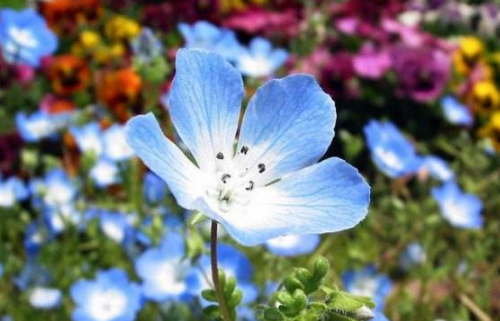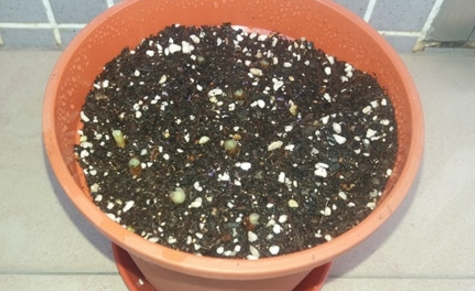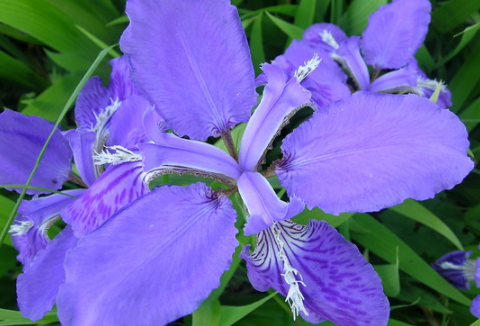Culture methods of Chrysanthemum morifolium
humidity management
Likes higher air humidity, air humidity is too low, will accelerate single flower withering. Also afraid of rain, need to keep the leaves dry at night, the most suitable air relative humidity is 65~75%.

temperature management
Likes warm climate, avoid extreme heat, obviously poor growth when the summer temperature is higher than 34℃; not resistant to frost and cold, and enters dormancy or death when the winter temperature is lower than 4℃. The most suitable growth temperature is 15~25℃, generally sowing in autumn and winter to avoid high temperature in summer.
light management
In spring, summer and autumn, it needs to be maintained under shade conditions. At higher temperatures (daytime temperatures above 25 ° C), if it is maintained in direct sunlight, the leaves will obviously become smaller, the internodes of the branches will be shortened, the leaves will be yellowed and shed, and the growth will be very slow or enter a semi-dormant state.
In winter, because the temperature is not very high, it is necessary to give it direct sunlight irradiation, in order to facilitate its photosynthesis and the formation of flower buds, flowering, fruit.
After the flowering period is maintained indoors for a period of time (10~15 days), it is necessary to move it to a place with shade conditions outdoors for maintenance for a period of time (about one month), so that the plant can accumulate nutrients and continue to bloom.
fertilizer and water management
As with other grass flowers, it requires more fertilizer and water, but it is required to follow the principle of fertilization (water) of "light fertilizer, small amount and complete nutrition", and after fertilization, keep the leaves and flowers dry at night.
The above is about how to raise the problem of chrysanthemum introduction, below we have a look at raising chrysanthemum to pay attention to what it!
The cultivation method and precautions of chrysanthemum
The cultivation method of chrysanthemum in pot soil selection
To cultivate chrysanthemum, choose the right size flower pot, you need to leave enough room for the plant to grow. Sprinkle a layer of coarse sand as a drainage layer, then sprinkle decomposed organic fertilizer, and then sprinkle soil. The soil can be configured by itself.
light and temperature
Chrysanthemum like warm growth environment, heat tolerance is not cold, the appropriate temperature for growth is between 15℃-25℃, in summer temperature higher than 34℃, will grow poorly, winter temperature lower than 4℃, will dormancy or death. Avoid high temperatures in summer and low temperatures in winter.
The light should be sufficient, but be careful not to expose it to direct light for a long time. In spring, summer and autumn, you need to pay attention to shade. In winter, the temperature is low, so you can give it direct light.
watered and fertilized
Chrysanthemum has higher requirements for water and fertilizer, likes more fertilizer and water, and requires higher air humidity. Watering and fertilization should follow the principle of more times and less dosage. In the spring and autumn growth season, watering and fertilization should be frequent, but attention should be paid to reducing watering on rainy days to avoid ponding. High temperature in summer, low temperature in winter, need to control water and fertilizer, watering and fertilization interval should be longer, watering in summer as far as possible in the morning when the temperature is low, winter mainly choose higher temperature noon.
The breeding method of chrysanthemum
The most common method of propagation is sowing, usually autumn sowing, or sowing in April.
pruning and topping
During the growth process, it needs to be pruned or picked frequently. Topping before flowering can germinate more branches. Pay attention to when picking, keep 4-6 leaves and pick off the top. In addition, yellow leaves and branches can be pruned frequently.
Morphological characteristics of chrysanthemum. Cultivation and breeding methods of chrysanthemum
Chrysanthemum for grass flowers, fresh flowers, sky blue, with white heart. Flowering spring, summer. There are white flowers and tricolor species (white in purple and yellow), annual herbs, plant height of 10-30cm, inverted shape, semi-fleshy, branches generally trifurcate. It is a traditional flower on the edge of flower beds in North America. It can also be planted in autumn as a greenhouse potted flower.
Chrysanthemum was inverted, semi-fleshy, branches generally trifurcate. Leaves opposite, oblong-obovate, pinnately parted. Flowers solitary in leaf axils, joint flowers, apex 5-lobed, linear discoid, bright blue flower base, white center, or white base, black center, or blue, purple veins, etc., petal apex with a drop of purple, flowering 4-9 months, capsule spherical.
Morphological characteristics of chrysanthemum
Chrysanthemum is a delicate, creeping herb, pubescent except for its corolla. Stolons slender, spreading, up to 1 m long, internodes short, 1.5-4 cm long, nodes slightly inflated, fibrous adventitious roots below. Leaves solitary on nodes, ascending, long stipe 2.5-6 cm long, ca. 1.2 mm in diam., as thick or slightly thicker as stolons; leaf blade ovate or oblong-ovate in outline, papery, 2-5 cm long, usually pinnately parted several to medium-ribbed, rarely lobed and crenate, lobes 5-9, obovate, crenate above middle or upper with short pointed teeth.
Flowers of P. indicum solitary in leaf axils, pedicels slender, nearly as long as petioles, curly in fruit; bracts small, subulate triangular; calyx campanulate, membranous, 5-7 mm long, 5-lobed to middle, lobes ovate to long elliptic; corolla white, 7-12 mm long, funnel-shaped, corolla tube about half or slightly shorter, inner surface densely covered with unicellular whiskers from throat to near base, lobes 5, oblong to spatulate; Stamens 4, inserted at corolla throat, anthers narrowly arrow-shaped, 2-loculed, apically united; disk developed cup-shaped, enveloping ovary 2/3, ovary ovate, apically barbate or nearly glabrous, style slightly shorter than corolla, stigma shallowly 2-lobed.
The fruit is spherical, 4-5 mm in diameter, enclosed in a persistent calyx; the seeds are large and few, oblate, ca. 1.5 mm in diameter, the seed coat is sticky, densely covered with subpeltate long hairs, and the flowering period is 4-9 months.
Ecological Habits of Chrysanthemum indicum
Chrysanthemum cold resistance is not strong, avoid hot. Chrysanthemum grows in fields, ditch sides, grasslands and sparse forests at altitudes of 1500-2500 meters.
Cultivation method of chrysanthemum
humidity management
Likes higher air humidity, air humidity is too low, will accelerate single flower withering. Also afraid of rain, need to keep leaves dry at night, the most suitable air relative humidity is 65~75%.
temperature management
Likes warm climate, avoid extreme heat, obviously poor growth when the summer temperature is higher than 34℃; not resistant to frost and cold, and enters dormancy or death when the winter temperature is lower than 4℃. The most suitable growth temperature is 15~25℃, generally sowing in autumn and winter to avoid high temperature in summer.
light management
In spring, summer and autumn, it needs to be maintained under shade conditions. At higher temperatures (daytime temperatures above 25 ° C), if it is maintained in direct sunlight, the leaves will obviously become smaller, the internodes of the branches will be shortened, the leaves will be yellowed and shed, and the growth will be very slow or enter a semi-dormant state.
In winter, because the temperature is not very high, it is necessary to give it direct sunlight irradiation, in order to facilitate its photosynthesis and the formation of flower buds, flowering, fruit.
After a period of indoor maintenance (10~15 days) during flowering, it is necessary to move it to a place with shade (heat preservation) conditions for a period of time (about one month), so that it is alternately exchanged to facilitate the accumulation of nutrients for the plant to continue flowering.
fertilizer and water management
As with other grass flowers, there are more requirements for fertilizer and water, but it is required to follow the principle of fertilization (water) of "light fertilizer, less and more, complete nutrition", and after fertilization, keep the leaves and flowers dry at night:
Spring and autumn are its peak growing seasons. Fertilizer and water management cycle according to the order of "flower treasure"-"flower treasure"--clear water--"flower treasure"--"flower treasure"--clear water.(At least twice a week to ensure "flower treasure"), the interval period is about: outdoor maintenance of 1~4 days, sunny or high temperature interval period is shorter, rainy days or low temperature interval period is longer or not poured; placed in indoor maintenance of 2~6 days, sunny or high temperature interval period is shorter, rainy days or low temperature interval period is longer or not poured.
Summer summer high temperature period it often enters dormant state, to fertilizer water requirements are not much, even to control fertilizer water control. Fertilizer and water management shall be circulated in the order of "flower treasure"-clear water-"flower treasure"-clear water-clear water, with an interval period of about 3~5 days for outdoor maintenance, shorter interval period for sunny days or high temperature periods, longer interval period for rainy days or low temperature periods or no watering; 4~7 days for indoor maintenance, shorter interval period for sunny days or high temperature periods, longer interval period for rainy days or low temperature periods or no watering. Watering time should be arranged as much as possible in the morning when the temperature is low, keep the leaves dry at night, and spray the plants frequently.
In winter, during winter dormancy period, fertilizer and water control is mainly carried out. Fertilizer and water management shall be carried out according to the order of "flower treasure"-clear water-"flower treasure"-clear water-clear water, with an interval period of about 7~10 days. The interval period of sunny day or high temperature period is shorter, and the interval period of rainy day or low temperature period is longer or no watering. The watering time shall be arranged as far as possible when the temperature is higher at noon on sunny day.
The reproductive mode of chrysanthemum
seed reproduction
Chrysanthemum is often sown in autumn after mid-late September or in pots in early April.
1. Substrate disinfection
The best way to disinfect the seed substrate is to put it in a pan and fry it. Any pest can be scalded to death.
2. Germination
Soak the seeds in lukewarm water (about the same temperature as washing your face) for 3 to 10 hours until they absorb water and swell. For common seeds that germinate easily, this work can be omitted.
3. Sowing
For small seeds that are difficult to pick up by hand or other tools, wet one end of the toothpick with water, stick the seeds one by one on the surface of the substrate, cover the substrate 1 cm thick, and then put the planted flowerpot into water, the depth of water is 1/2~2/3 of the height of the flowerpot, and let the water slowly soak up.(This method is called "pot dipping method"); for seeds with large seeds that can be picked up by hand or other tools, put the seeds directly into the substrate and sow them at intervals of 3× 3 cm. After sowing, cover the substrate, and the covering thickness is 2~3 times of the seed grain. After sowing, spray can be used, fine hole shower to seed substrate wet, later when the pot soil is slightly dry and then sprinkle water, still pay attention to watering strength can not be too large, so as not to wash the seeds up.
Post-seeding management
After sowing in autumn, when encountering cold wave and low temperature, you can wrap the flowerpot with plastic film to keep warm and moist; after the seedlings are unearthed, the film should be uncovered in time, and before 9:30 in the morning every day, or after 3:30 in the afternoon Let the seedlings receive the sun's light, otherwise the seedlings will grow very weak; after most of the seeds are out, they need to be properly thinned: Remove the diseased, unhealthy seedlings, so that there is a certain space between the remaining seedlings; when most of the seedlings grow 3 or more leaves, they can be transplanted into the pot.
cutting propagation
1. Cutting substrate
Is used for cuttage nutrient soil or river sand, clay soil and other materials. It is difficult to get ideal cuttage matrix due to family cuttage conditions. It is recommended to use the prepared and disinfected cuttage matrix provided by this station; medium coarse river sand is also OK, but it should be washed with water several times before use. Sea sand and river sand in saline-alkali areas should not be used because they are not suitable for the growth of flowers and plants.
2. Selection of cuttings
The branches used for cuttings are called cuttings. Usually combined with the work of picking, the thick, disease-free top shoots taken off are used as cuttings, and the top shoots are directly used for cutting.
Management after cutting
1. Temperature
The optimum temperature for cuttings rooting was 18 ℃~ 25 ℃, lower than 18℃, cuttings rooting was difficult and slow, higher than 25℃, cuttings were easily infected and rotted, and the higher the temperature, the greater the proportion of rot. After cutting encounter low temperature, insulation measures are mainly used to cut the pot or container wrapped with film; cutting temperature is too high temperature, cooling measures are mainly to cut shade, to cover 50~80% of the sun, at the same time, to cut spray, 3~5 times a day, sunny temperature higher spray times are more, rainy days lower temperature is larger, spray times are less or not spray.
2. Humidity
The relative humidity of the air must be maintained at 75 - 85% after cutting. The humidity can be increased by spraying cuttings 1 to 3 times a day. The higher the temperature in sunny days, the more the number of spraying times. The lower the temperature in rainy days, the less or no spraying times. However, excessive spraying, cuttings are easily infected and rotted by germs, because many kinds of germs exist in water.
3. Light
Cuttage propagation can not be separated from sunlight, but the stronger the light, the higher the temperature in the cuttings, the more vigorous the transpiration of cuttings, the more water consumed, which is not conducive to the survival of cuttings. Therefore, after cuttage, the sun must be blocked by 50~80%. After the roots grow out, the shading net is gradually removed: the shading net is removed at 4:00 pm every day on a sunny day, and the shading net is covered before 9:00 am the next day.
Read the above introduction on the cultivation and breeding methods of chrysanthemum, do you have more understanding of the cultivation and breeding methods of chrysanthemum, want to know more about chrysanthemum knowledge, please continue to pay attention.
- Prev

Planting method of purple flower
1. Collect seeds purple flower blossoms in summer, the capsule will mature in autumn, and seed collection can be carried out at this time. After the capsule is split, the seeds can be taken out, the seeds can be screened and the damaged seeds can be removed. It is best to store the seeds and sow them next spring. two。 The growth of purple flower needs fertile soil.
- Next

Culture methods of Iris
1. Soil iris is suitable to grow in slightly alkaline soil rich in humus and good drainage, and can be mixed with peat, vermiculite and fine sand to improve the soil. two。 The most suitable temperature for Iris is 16-18 ℃, the lowest soil temperature should be more than 5 ℃, and the highest should not exceed 20 ℃.
Related
- Fuxing push coffee new agricultural production and marketing class: lack of small-scale processing plants
- Jujube rice field leisure farm deep ploughing Yilan for five years to create a space for organic food and play
- Nongyu Farm-A trial of organic papaya for brave women with advanced technology
- Four points for attention in the prevention and control of diseases and insect pests of edible fungi
- How to add nutrient solution to Edible Fungi
- Is there any good way to control edible fungus mites?
- Open Inoculation Technology of Edible Fungi
- Is there any clever way to use fertilizer for edible fungus in winter?
- What agents are used to kill the pathogens of edible fungi in the mushroom shed?
- Rapid drying of Edible Fungi

